Colombia The wonders of the Sierra Nevada
A sporty crossing, four days in the jungle and how we're boing hounted by the curse of the lost crew in the desert.
Colombia. With an area of 1,14 million km², it is by far the largest country our journey has taken us to so far (in comparison: Switzerland with 41,285 km²). It is also the first mainland we have reached since we left the north coast of Africa through the Strait of Gibraltar in November 2023. We will tie up the ship here in the harbour of the city of Santa Marta for a good three weeks and explore the country a little. Off to the mountains! 🏔🥾
On the really high seas
Only one night has passed since we left our buoy in Bonaire. We look at the clock, then at our log. We are going too fast. The wind is whistling around our ears at 25 knots, we are travelling at 7 knots. The notorious Capo de la Vela still lies ahead of us, and we definitely don't want to pass it before sunrise. Who knows what's waiting for us there, and a little daylight is more pleasant than the clapping darkness. But what now? "We have to try to slow down," I say to Thierry. That means reducing the sail area. We're already sailing with just the genoa (our foresail), and now we're going to furl 2/3 of it. This leaves only a shred hanging out, but with the fresh breeze whistling at the moment, we're still speeding into the night.
The plan works and we enter the sea area between Punta Gallinas and Capo de la Vela just in time for daybreak. The route along the peninsula, which is described in numerous stories of showers with 6m high waves and 50kn gusts, is about 35nm. Well then, let's get sailing!
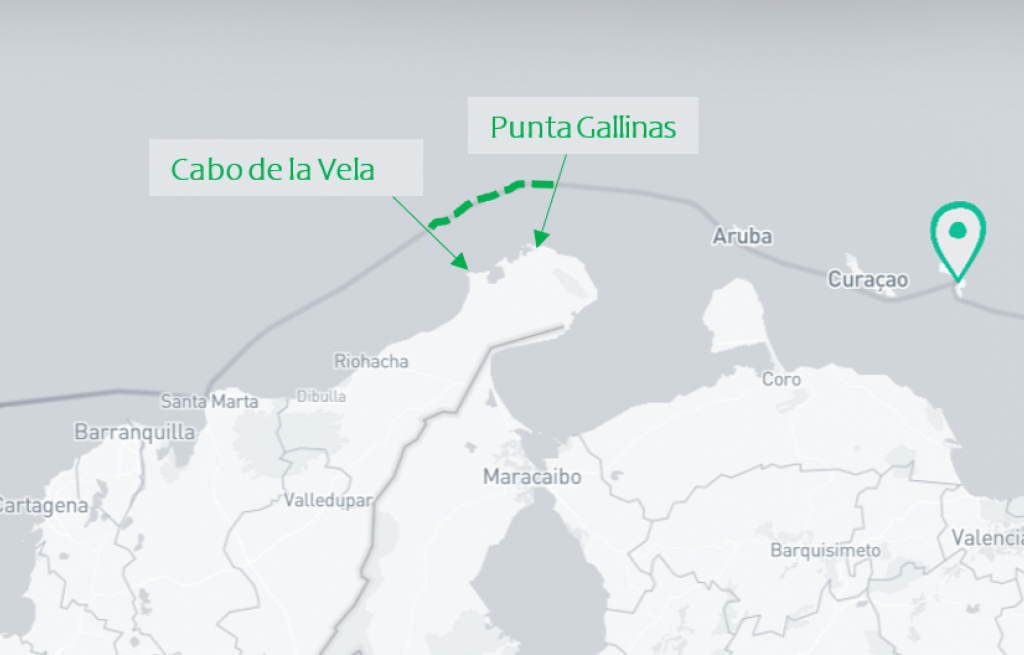
We keep so much distance from the land that we can't even see it. The wind rarely drops below the 30 kn mark and the waves are high and steep. How high exactly? That's one of the questions we hear the most. Unfortunately, it's incredibly difficult to determine the height of waves when you're in them yourself. I estimate around 3.5-4 metres. At least high and steep enough to break. It reminds me strongly of the days of the Atlantic crossing when we slipped into the uncomfortable weather conditions. Only one thing is different: I'm not scared this time. I don't want to say that I'm particularly enjoying the journey. Waves regularly crash into the cockpit from behind and we get wet. Flying fish land everywhere they shouldn't and I get scared every time. But all in all, I feel a sense of strength, I've seen this before and I know it will go wrong. We get shaken up quite a bit, so we wear our life jackets during the day and lock ourselves in.
Land ho!

To summarise, the conditions we encountered were more or less in line with the forecast. We are very relieved that the Kapp has not brought us any nasty surprises. With the first rays of sunshine on the last day, the clouds on the horizon clear and the silhouettes of the majestic mountains begin to emerge. Only a few miles separate us from the safe harbour in Santa Marta. But they are still a challenge! We still have 30 knots of wind behind us as we head for the entrance to the bay. We both dread the harbour manoeuvre a little 🥴 Mooring in so much wind in a harbour you don't know is anything but fun. We ask the Coast Guard for permission to enter the harbour by radio and head into the bay. And BANG, the wind is gone! 🤩 A stone falls from our hearts. And so a very sporty but successful crossing comes to an end.
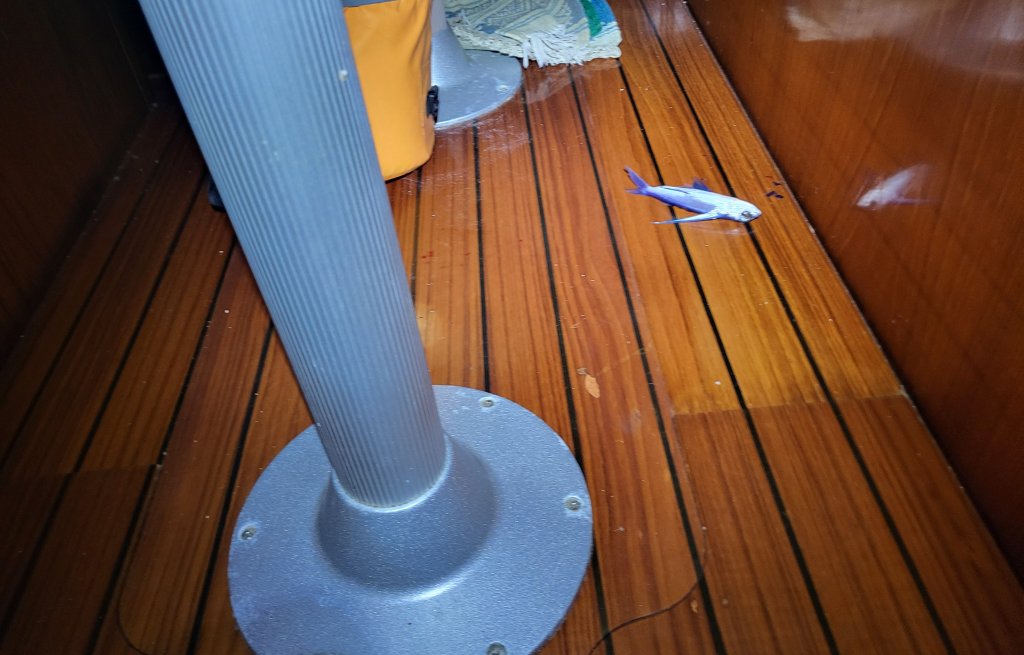

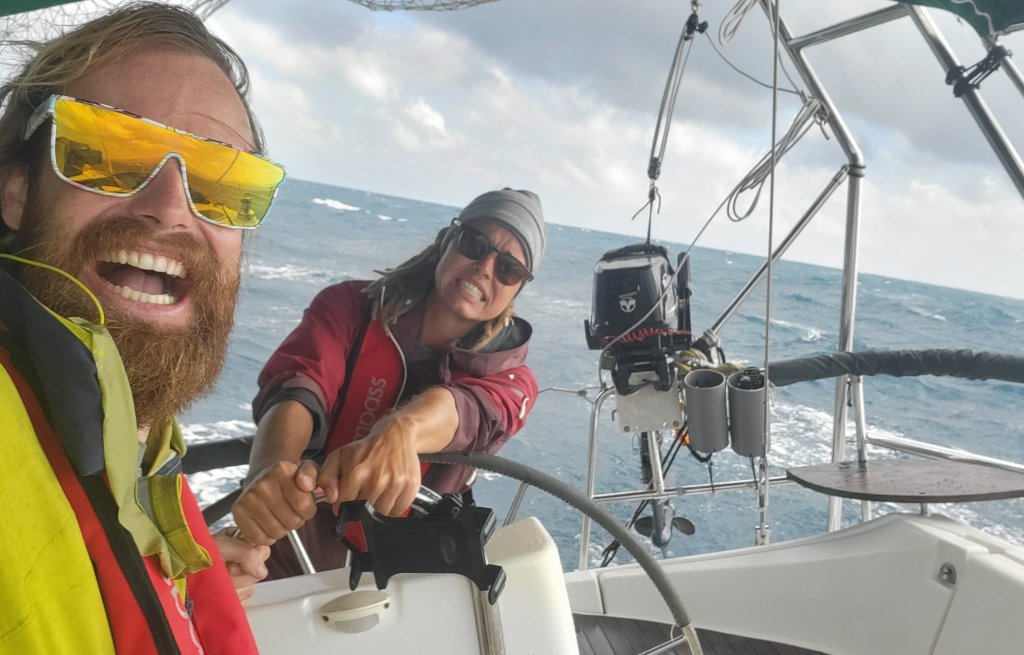
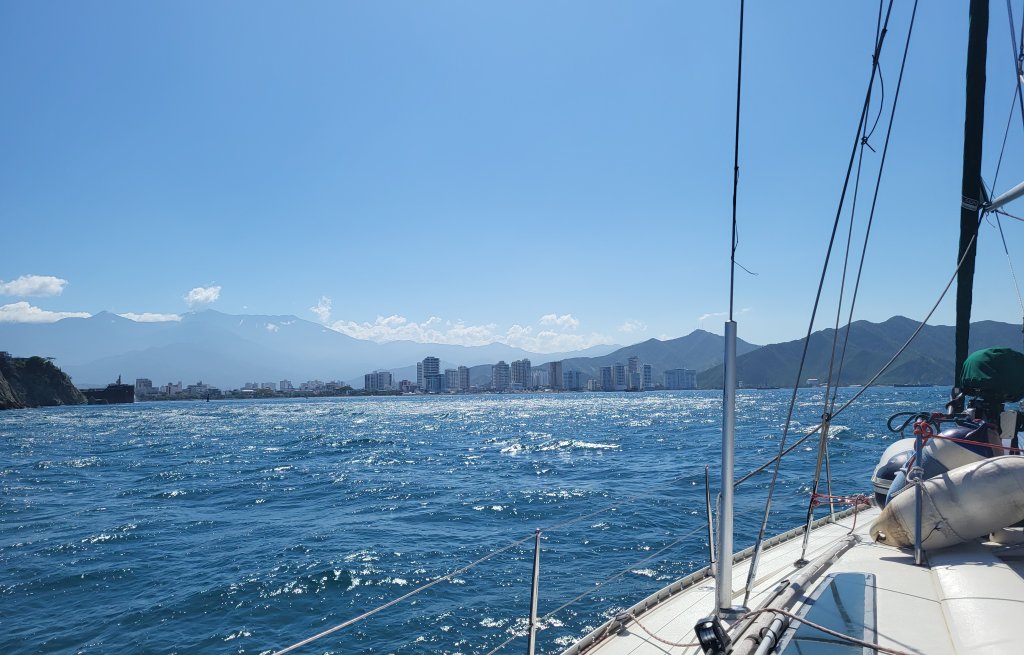
Sniff the mountain air in Minca
We treat ourselves to a few days off in the mountains. Minca comes across to us as a typical backpacker village. It's full of hostels, bars and restaurants. We opted for a nice hotel a little higher up. The way there leads over a densely overgrown hill. The flora and fauna really amazed us. The hotel is super nice, in a great location and surprisingly cheap. I think I like Colombia 😉 With wonderful views as far as Santa Marta, we enjoy the cooler temperatures on the terrace of our bungalow. Sometimes it's even a little too cool and we have to burrow deep into our blankets.
The next day, we take a short walk down to the river with the other hotel guests. It's nice to be able to chat to different people again and hear new stories.
We really enjoy our time up here and it's good to have a bit of distance from the boat. The birdsong is like a real early morning concert. After two nights, however, we make our way back to the harbour. A few days of work, housework and boat projects lie ahead of us. For example, we need holders for the 4 scuba tanks I bought in Bonaire. But before that, we make a stop at the coffee farm "La Victoria" in the middle of the mountains. Everything here is still done by hand and with water power. The bus stops at the market in Santa Marta and it doesn't disappoint: meat, fruit, vegetables and colourful hustle and bustle. A wonderful excursion comes to an end.
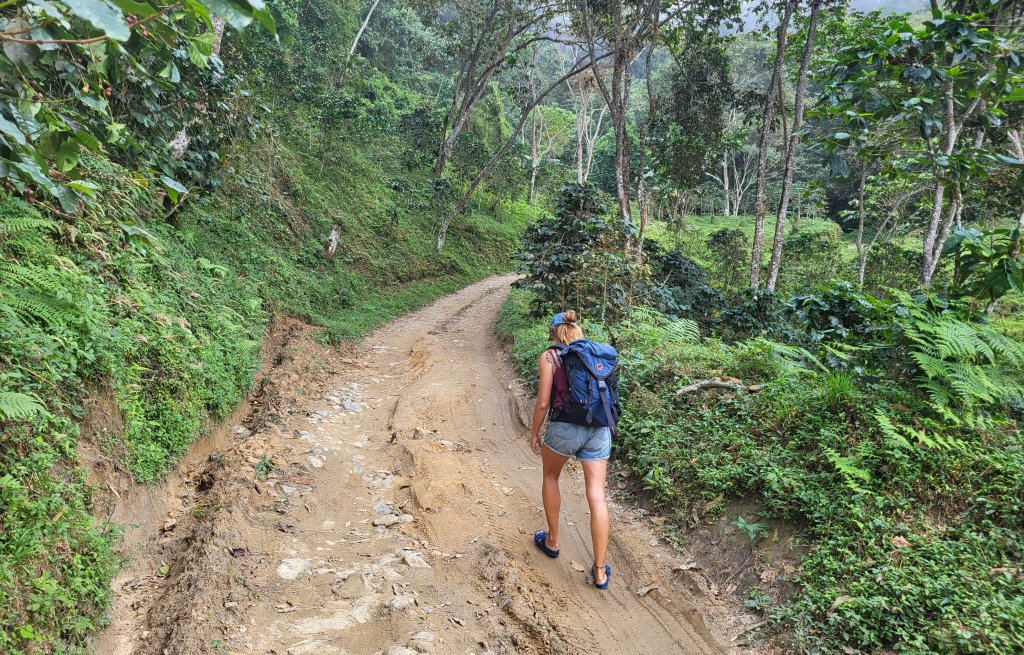
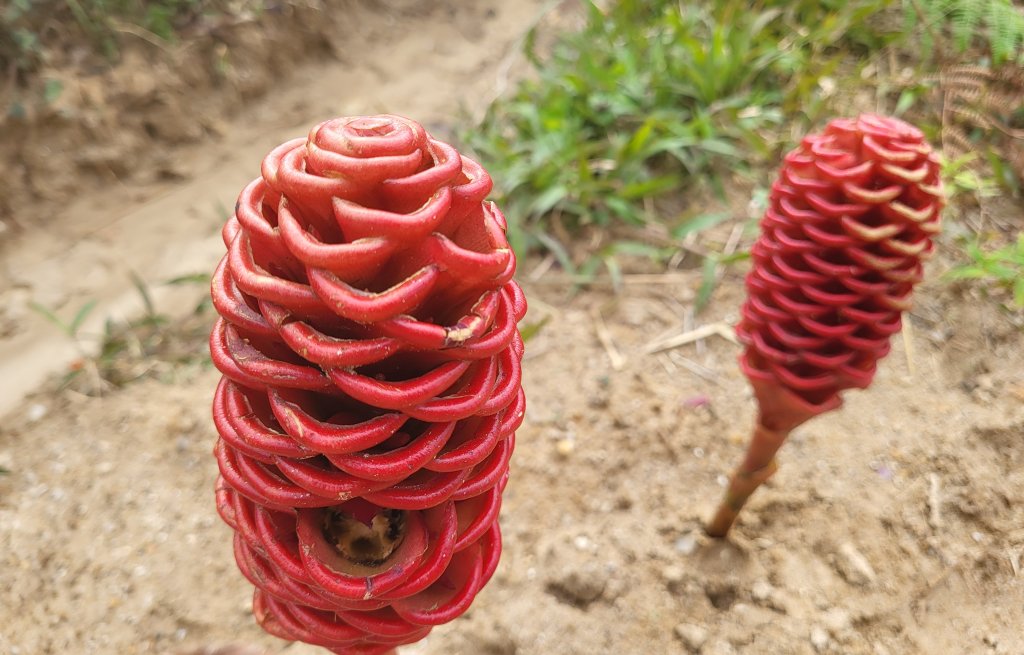
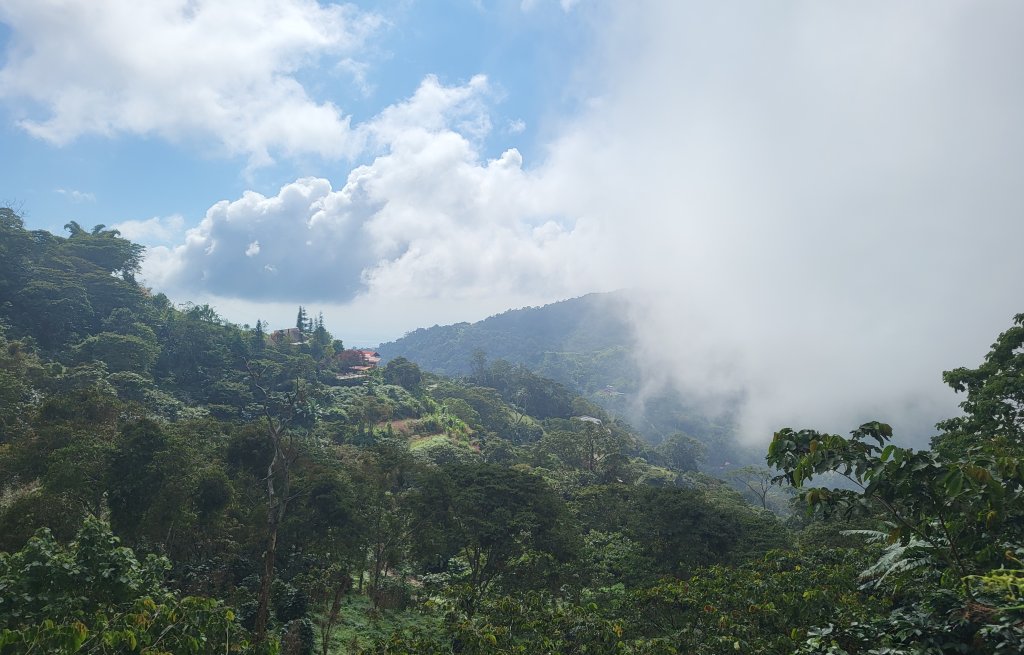

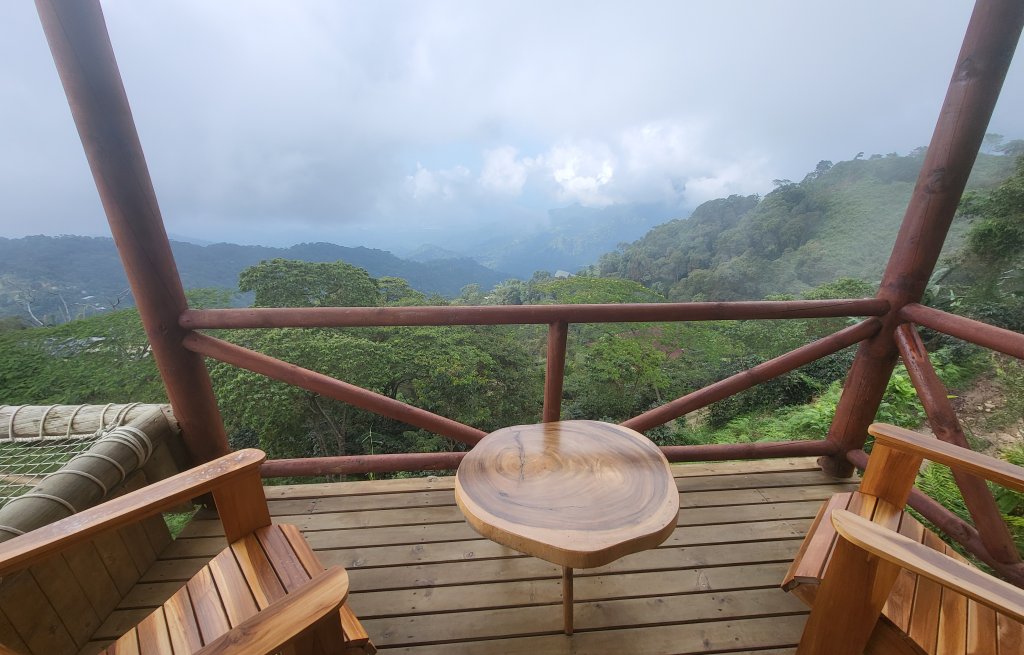
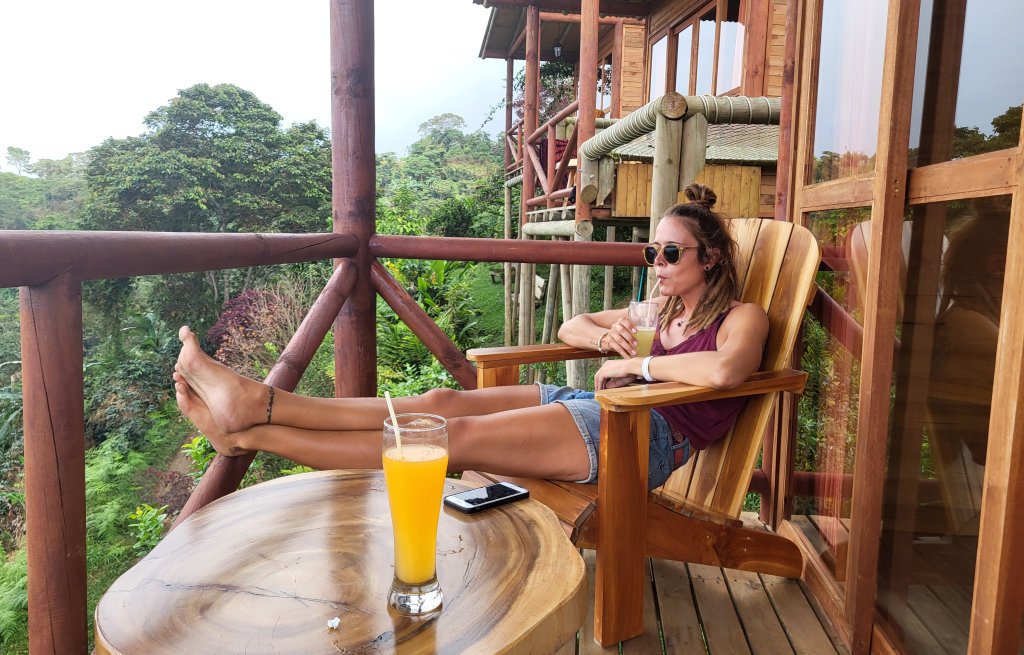
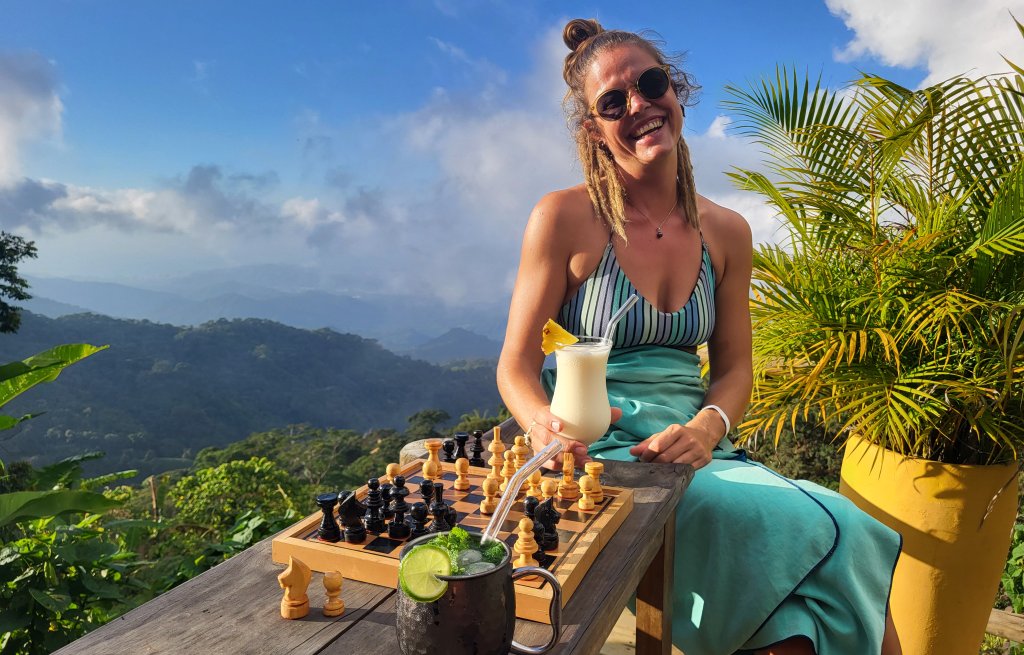
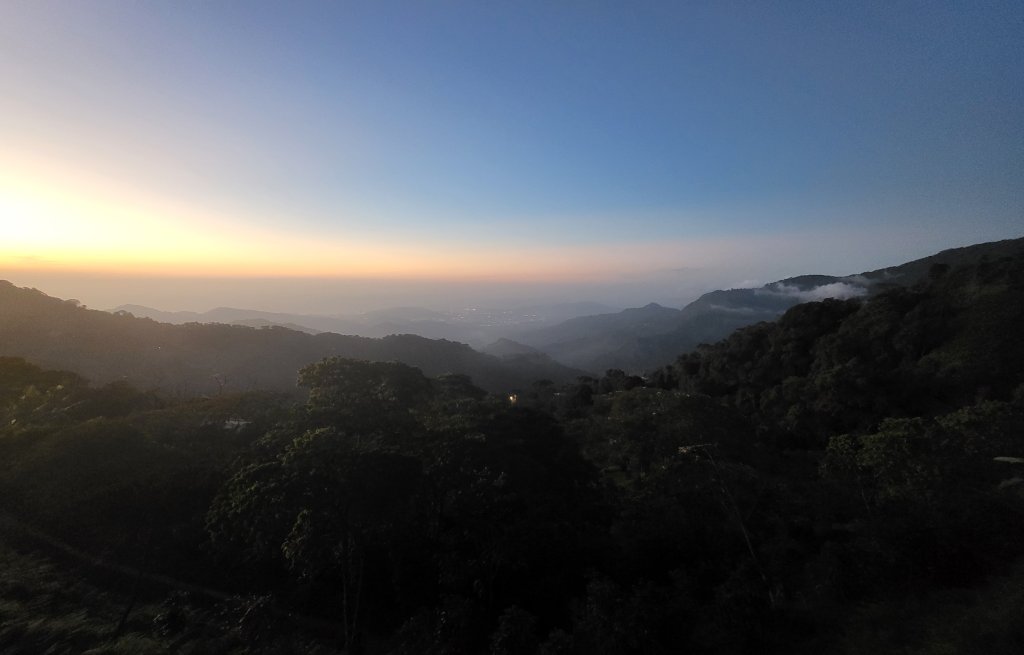
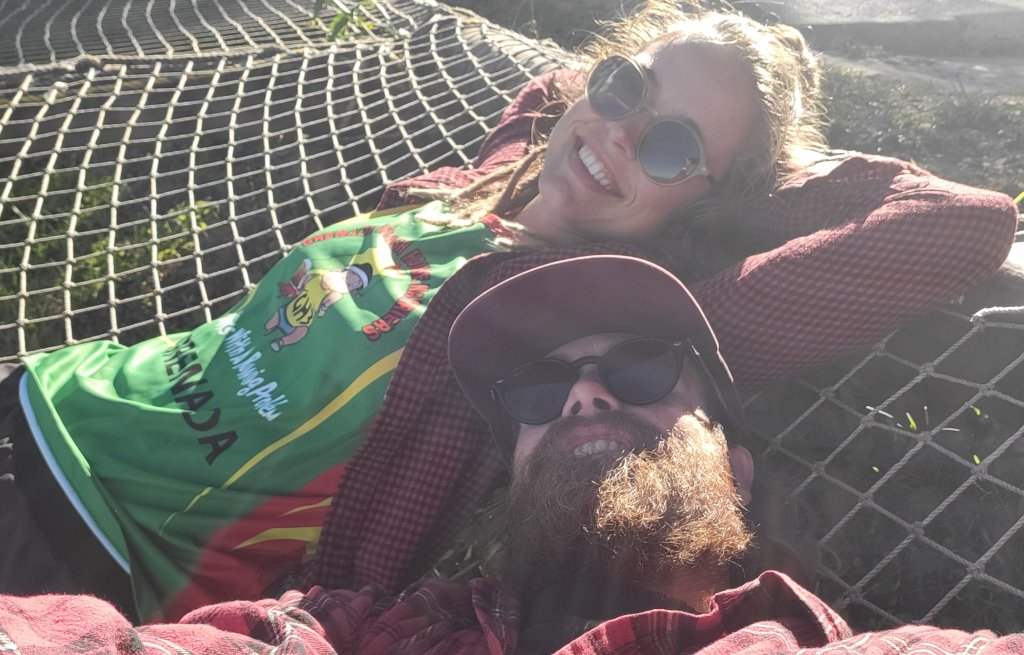
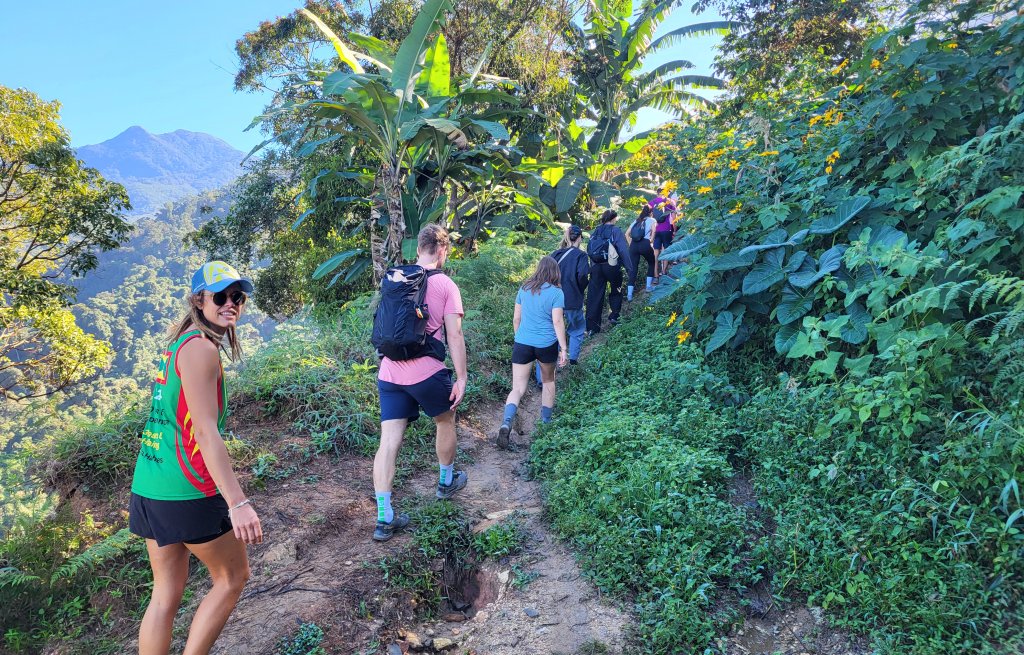

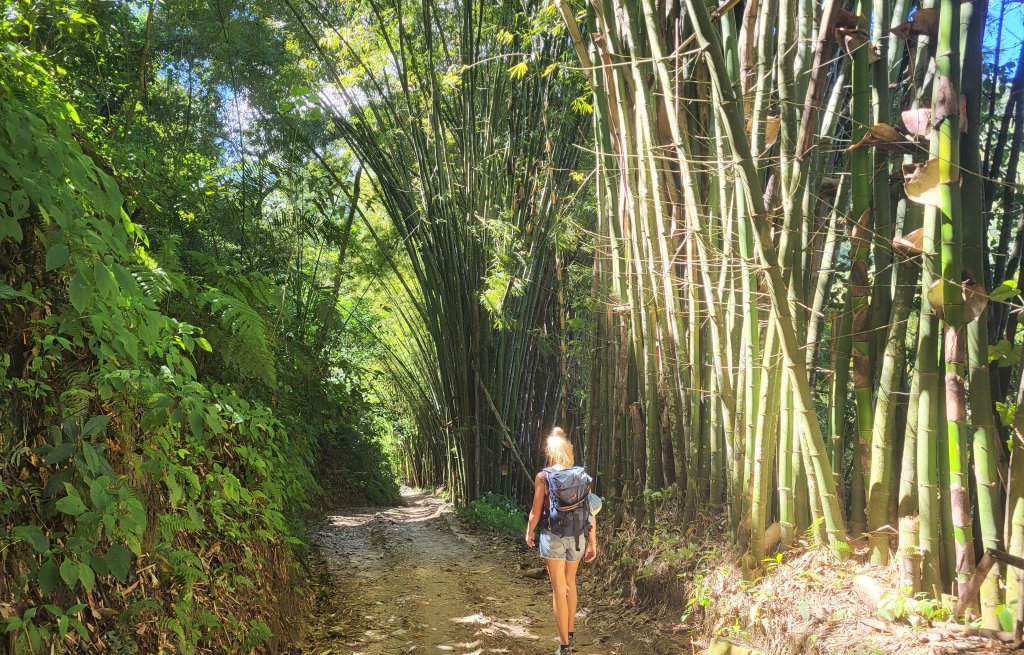
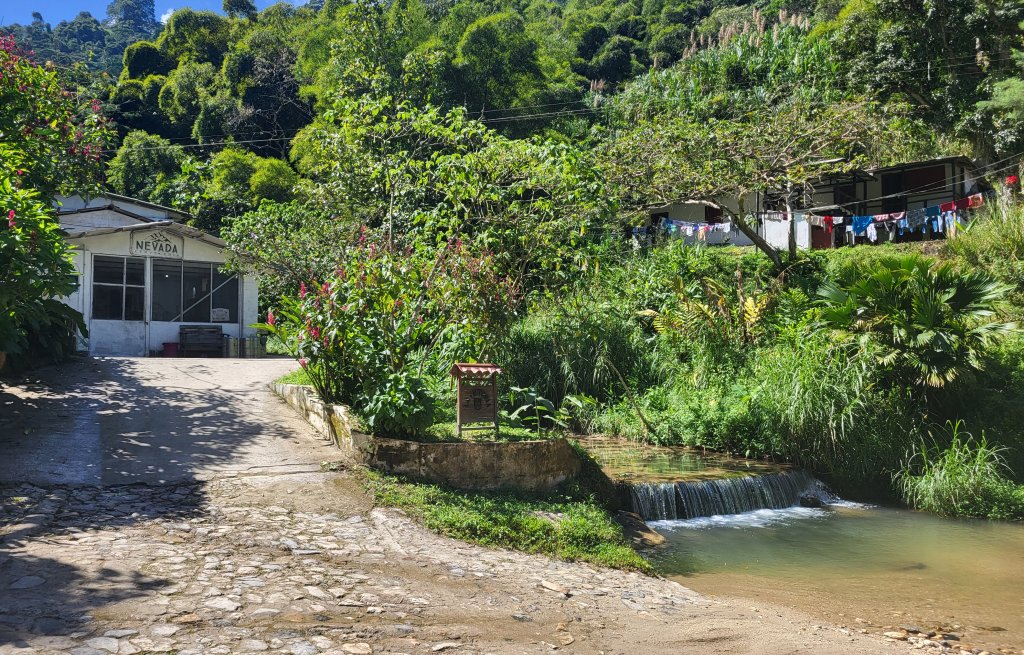
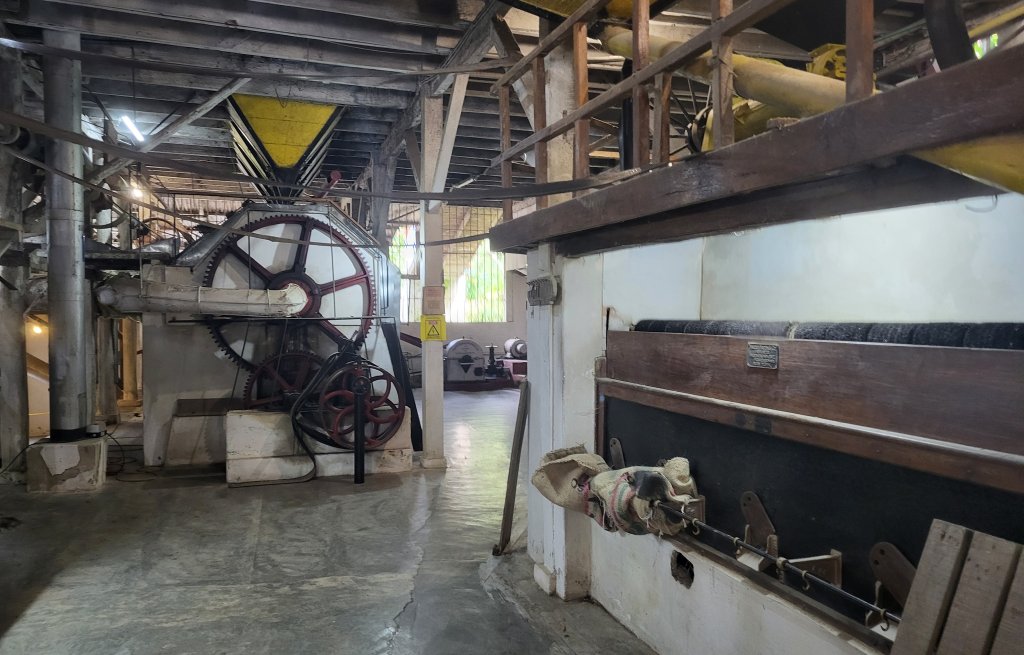
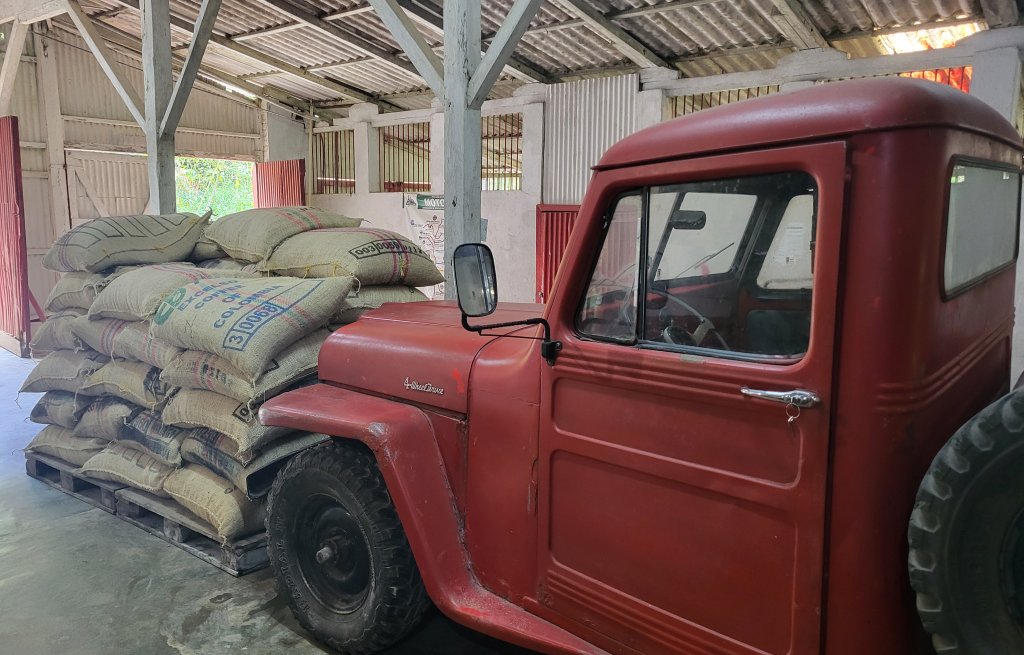
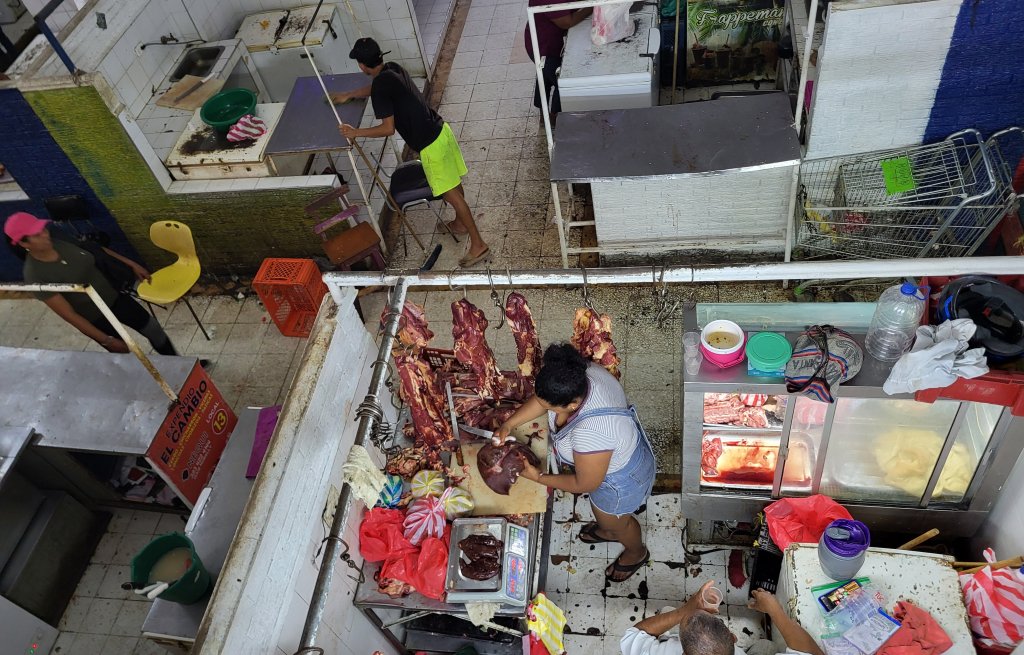
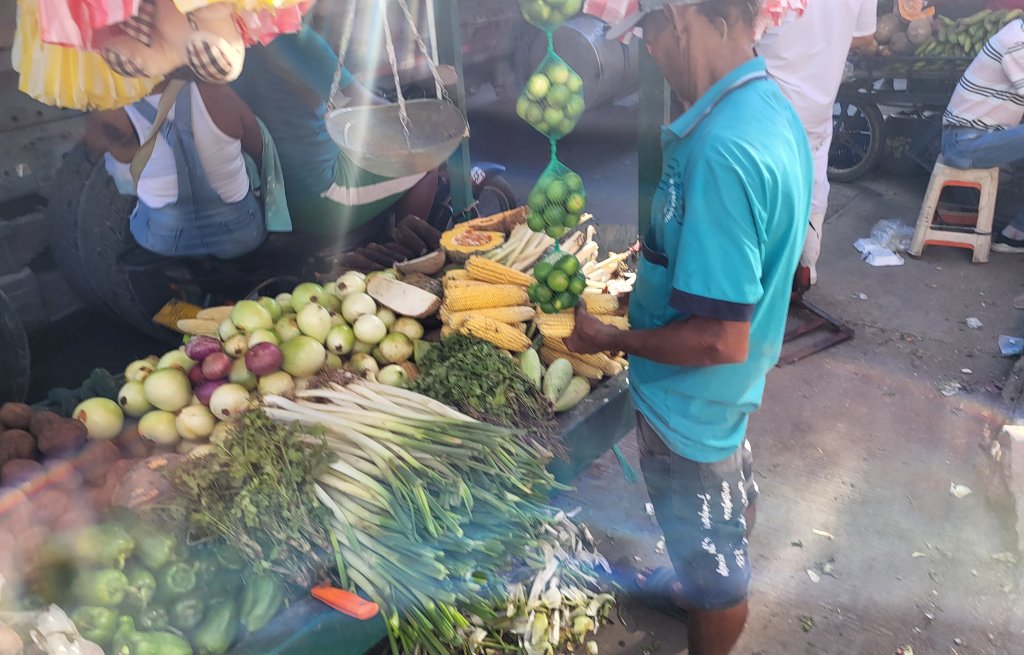
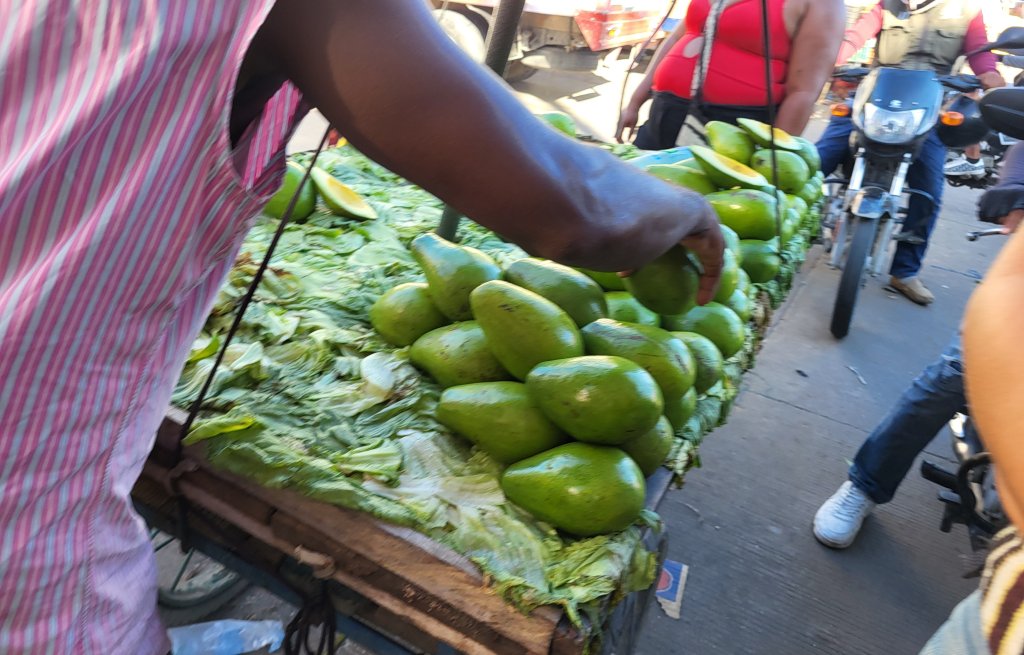
La Ciudad Perdida
We had been looking forward to this excursion for days. We set off on a 4-day trek through the jungle to find the "Ciudad Perdida", the lost city.
The Ciudad Perdida (also known as Teyuna) is a pre-Columbian city in the middle of the jungle, built by the Tairona culture around 800 AD - that is around 650 years before Machu Picchu. It was an important political, economic and spiritual centre. The city consists of more than 250 stone terraces on which houses stood. After colonisation by the Spanish in the 16th century, the area was plagued by a large number of swine and the inhabitants feared that the city was cursed. They fled to the mountains and abandoned the city. Today, with its wide terraces, it is still an important venue for spiritual rites.
We set off on day 1 in a colourful group of 9 people. We will cover a total distance of around 60 kilometres and spend the nights in camps in the jungle. There is a lot of socialising within the group and also with the groups of other tour operators. We enjoy the exercise, the first few hours are on a tarred road up the mountain, later it becomes muddy. We arrive at our camp at around 5.00 pm and after a delicious dinner we go to bed at around 9.00 am. The day starts at 05:00 in the morning and we set off at 06:00. We like the local breakfast, which usually consists of eggs, arepas (small cornmeal pancakes) and fruit. And the most delicious hot chocolate I've ever had 😍
I'm enjoying this trek incredibly. The nature is so indescribably beautiful, the jungle is bursting with life and you get the feeling that everything is growing. There is time to talk to new people as we walk, but I also enjoy walking alone and letting my mind wander. Our path leads us up and down through thick jungle, we cross rivers and wade through muddy ground. We also pass settlements of indigenous peoples again and again. For those who want to, here is a short detour into a part of Colombia's history:
1st-16th century:
The area is developed and inhabited by the Tairona civilisation. They build cities such as Teyuna (Ciudad Perdida), control trade routes and practice sustainable agriculture in the highlands.From the 16th century - colonial period:
The Spanish colonise the area. Many Tairona towns are destroyed, their inhabitants are persecuted or retreat to the higher, more inaccessible areas of the sierra. Their descendants survive there in relative isolation to this day.19th-20th century:
The indigenous population continues to live in the Sierra Nevada, but is threatened by land theft, missionary work and violence. Many of their territories are expropriated or under military control.1991 - Colombian Constitution:
The new constitution recognises the indigenous territories as autonomous entities with collective land rights.2004:
The indigenous authority of the Kogi (one of the four indigenous tribes in the Sierra) is officially recognised over the area around Ciudad Perdida. Nevertheless, the land remains a state protected area, which leads to conflicts.2018:
The Colombian state recognises the expanded Línea Negra, which includes many sacred sites - including the Ciudad Perdida - as part of the ancestral territory.
We are allowed to stop off in some of the settlements. A Mamo, the spiritual leader of a village, explains some of the customs and rites of the people. I find their coca leaf chewing culture the funniest: according to Kogi belief, the woman comes from nature and the man from the moon. Nature is the mother of life and possesses all energy. In order for the man to reach the same level of energy, he must therefore consume nature's energy. So he has his wives or daughters pick leaves from the coca plant, because he himself as a man must not desecrate nature. He roasts these leaves on the fire to prevent them from going mouldy. Then he takes a few shells from the Caribbean coast, puts them in the fire to release the lime and grinds them until he has a lime powder. Every boy who becomes a man is allowed to make a kind of vase in which he keeps this powder. Using a long stick, he puts some powder on his tongue, takes a coca leaf and together with his saliva and the substances released during chewing, some chemical reaction takes place and BANG - the Dude is high 😂 The stick is wiped off the vase while chewing and over the years a ring of lime accumulates there. In the story, this consumption only takes place in circles where an elder shares his wisdom and those present want to open their minds to listen. So the larger the lime ring on the vase, the more wisdom the owner has been allowed to take with them. In practice, however, this is probably more of a nice excuse to beam away 😆 Because we also see many men sitting alone and waving their chopsticks...
A truly wonderful adventure comes to an end. We were offline for four days, we were so mesmerised by nature that we didn't even think about the boat. It did us an incredible amount of good and we arrive back on the Cervino overjoyed but also a little tired. And we're looking forward to a well-earned shower 🤩.

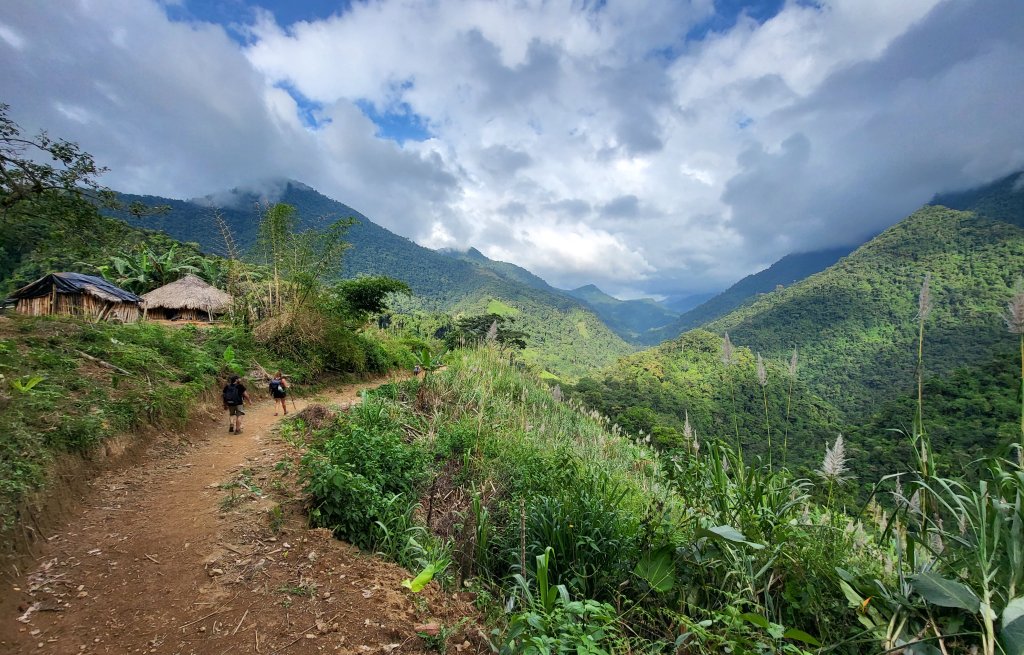
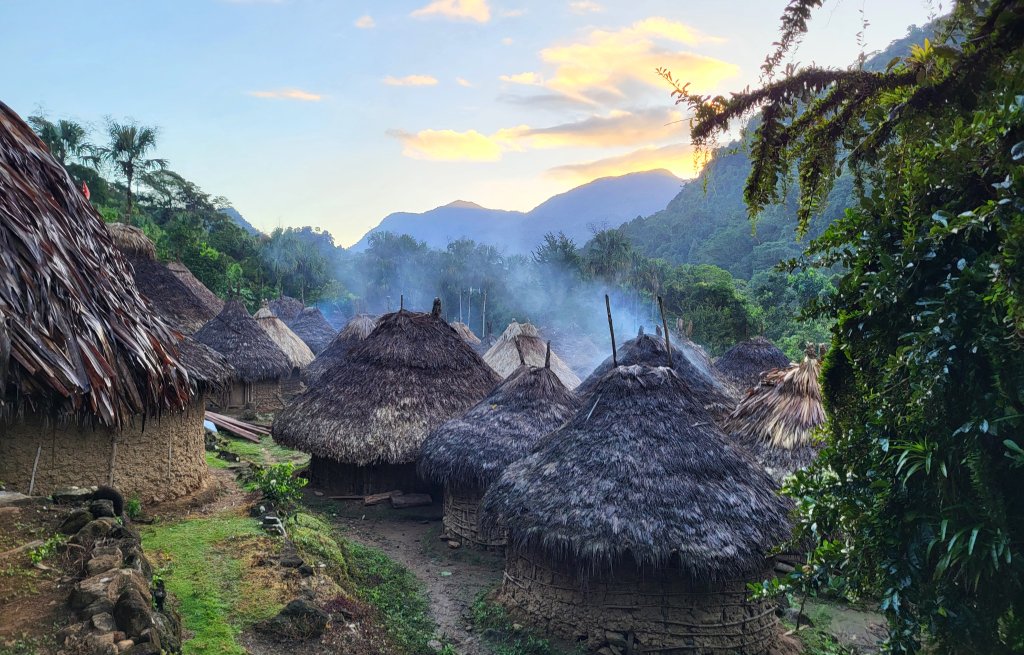
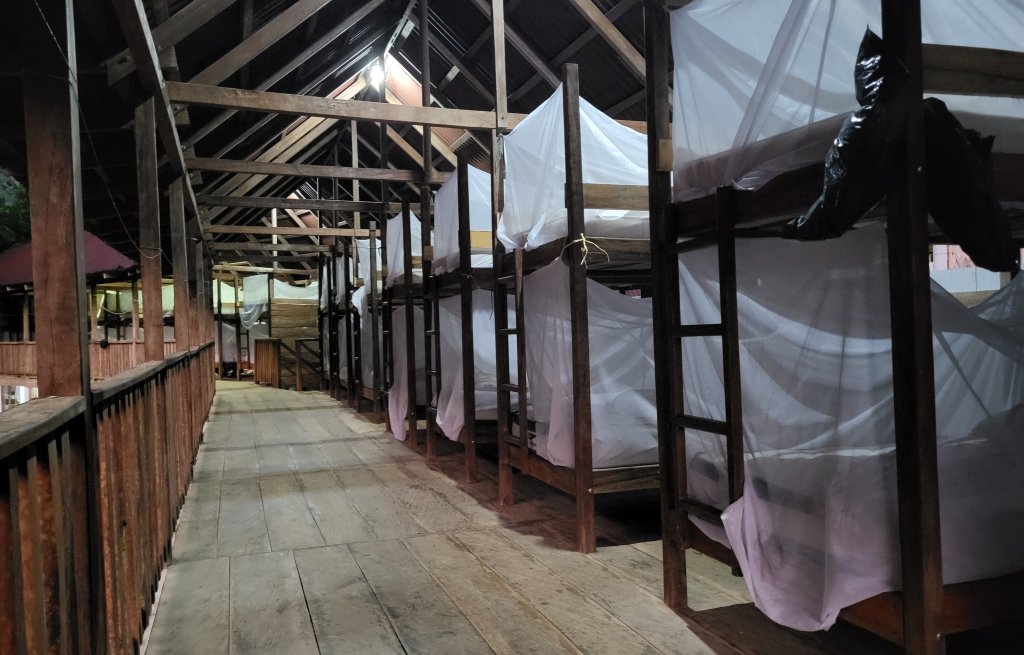

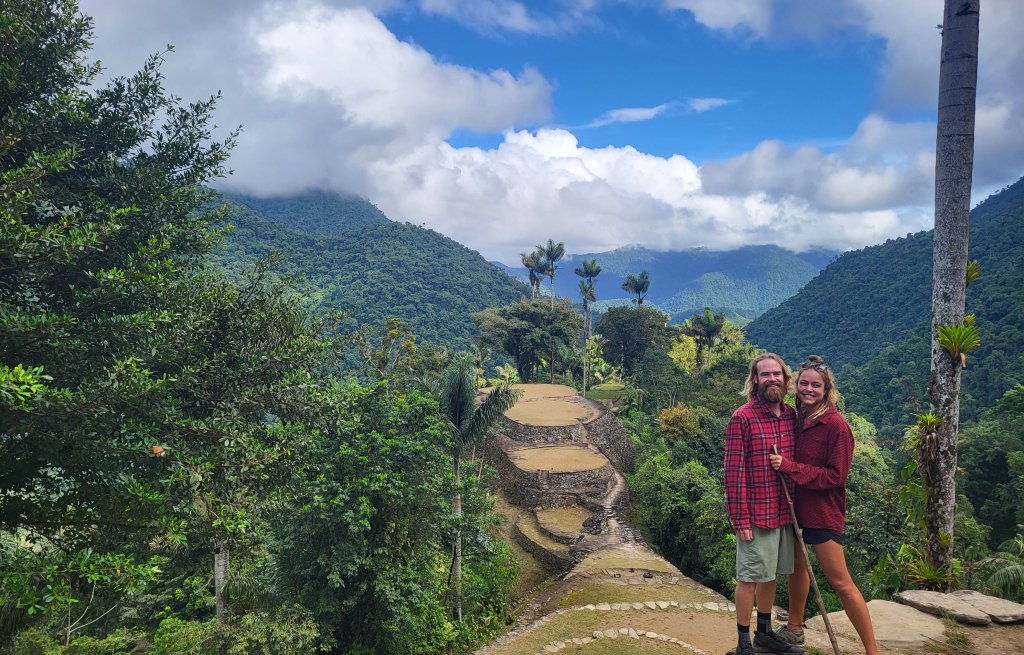

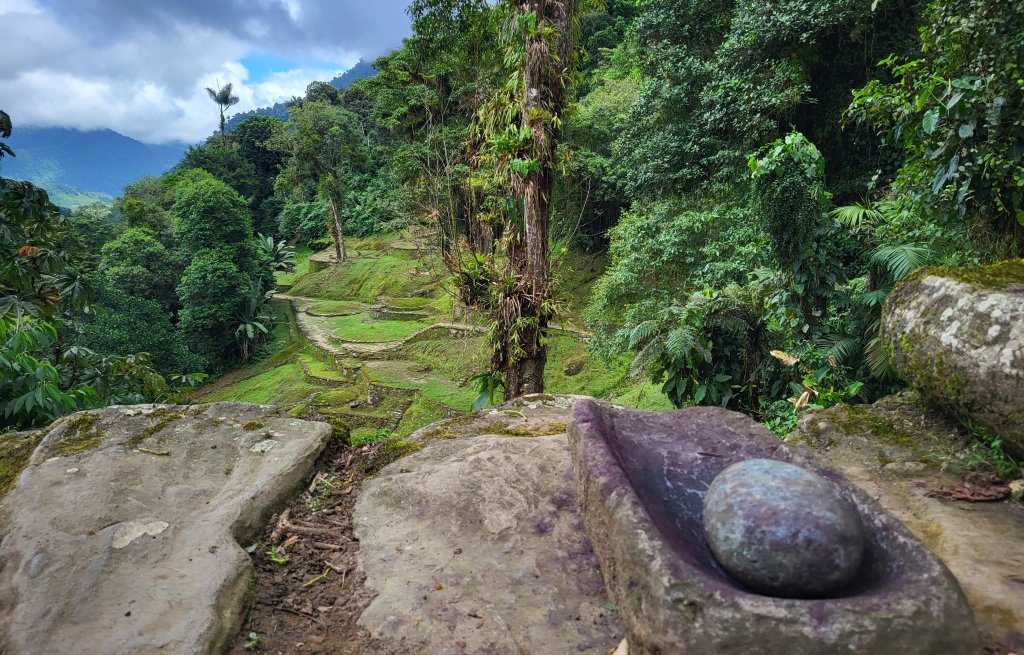
La Guajira
The Guajira is a part of Colombia that borders Venezuela. It also includes the Capo de la Vela and the Punta de Gallinas, which we now want to see from a different angle. We are going on a 3-day tour through the desert in a jeep.
This area is also the territory of an indigenous people, the Wayuu. However, after what we saw in the Sierra Nevada, we probably started this adventure with somewhat too specific ideas. The people here wear modern clothes, have shops and mobile phones. This surprises us a little, as we had imagined more rudimentary living conditions. We leave the capital Uribia and drive out of civilisation into the desert. The terrain is very impressive: cacti, rocks, steppe desert, sand dunes. A little bit of everything. Every now and then we see small and large shelters, the so-called "rancherias". Each family has its own retreat here, where they can live as they please. They sleep in "chinchorros", large and elaborately made hammocks. We also sleep in a rancheria for the first night, but we treat ourselves to a room with a bed because we are old 😂 The chinchorros will have to wait until tomorrow. Thierry takes a short break from the afternoon programme and treats himself to a kite session at Capo de la Vela. The sun sets, we eat delicious fish and chat to the guide about Wayuu culture. He himself is also Wayuu and patiently answers all our questions (in poor Spanish).
There are lots of children at the side of the road, stretching a rope or chain across the path. But they don't want money, they want to eat and drink. We were advised to give small quantities of food such as rice, bread rolls and water to the Wayuu out of respect and decency towards them. We take a somewhat critical view of this issue for two reasons: On the one hand, this behaviour creates a kind of habit. The children know that they will get something if they stand by the roadside. So they may miss out on other ways of organising their lives. The second point is that each of these biscuits, each water, each small bag of rice is individually wrapped. And several times I have seen these packages end up on the ground immediately after the contents have been eaten. A great pity.
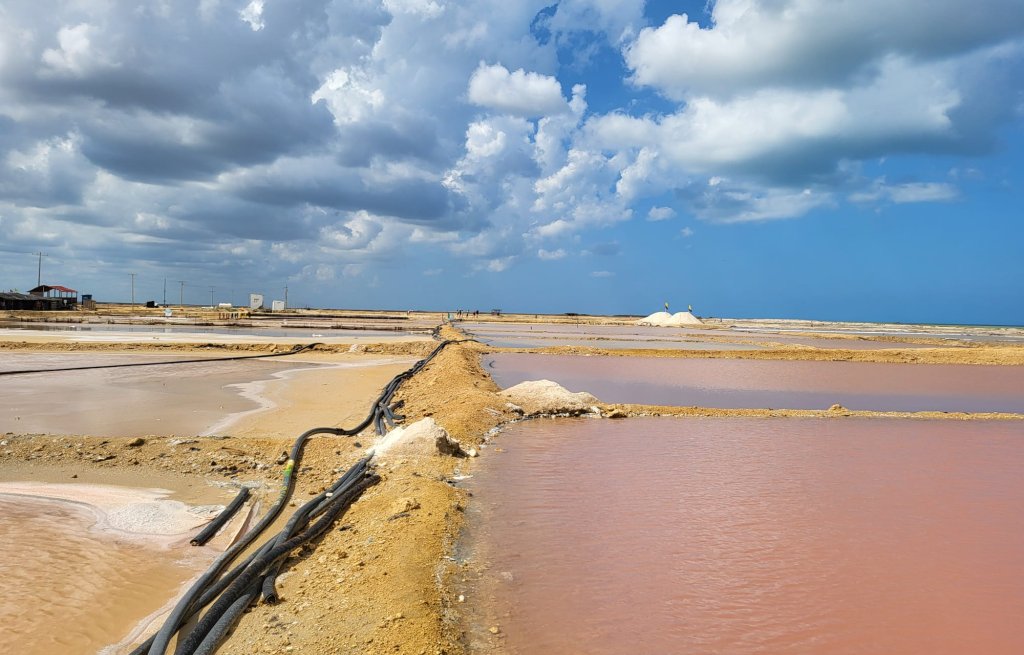
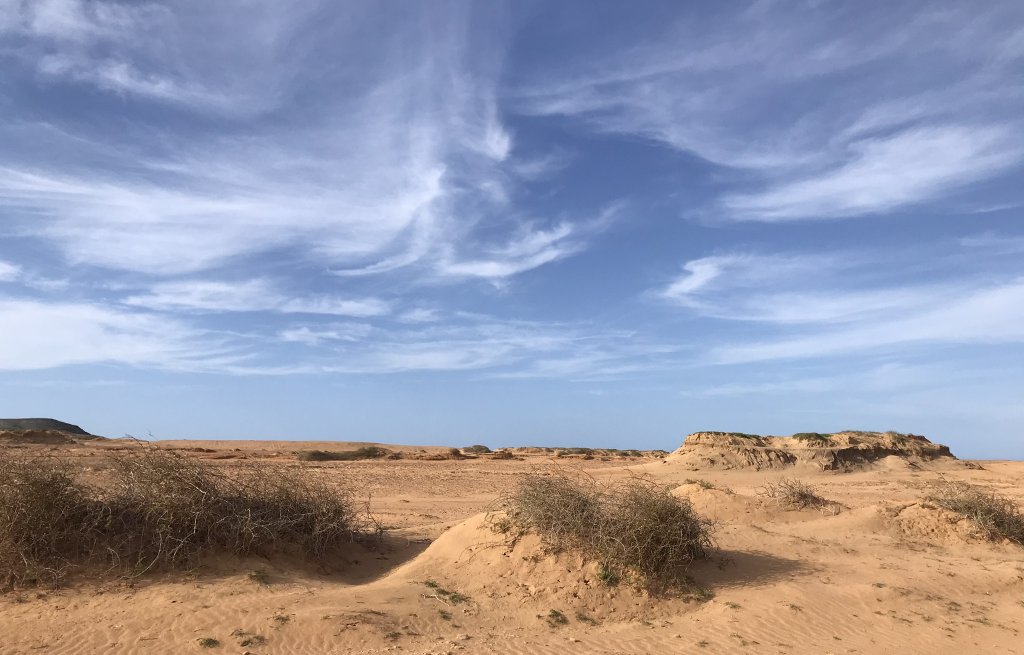


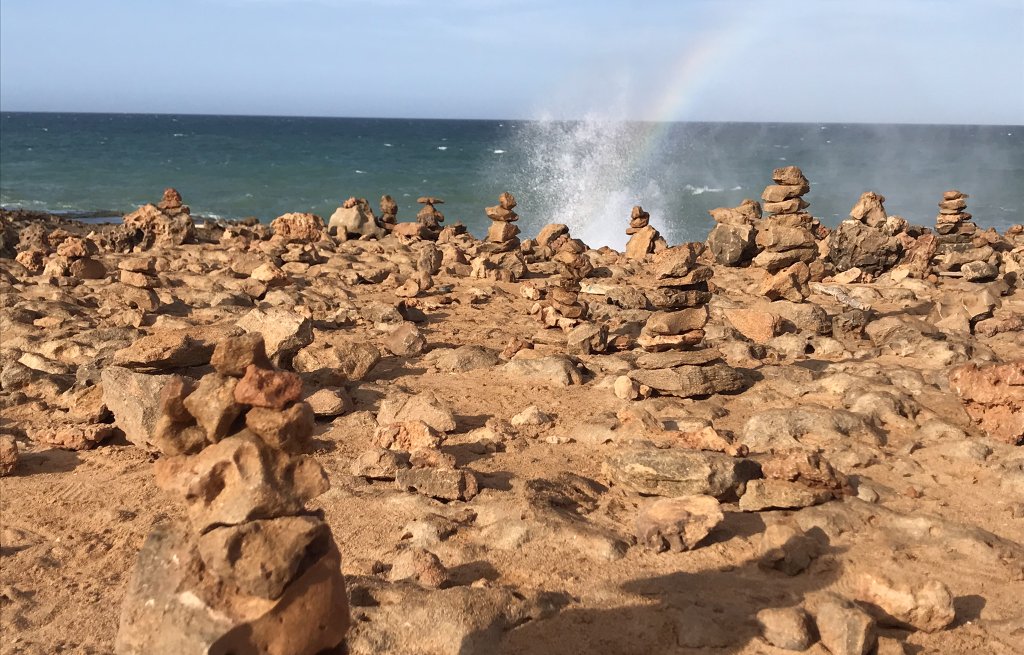
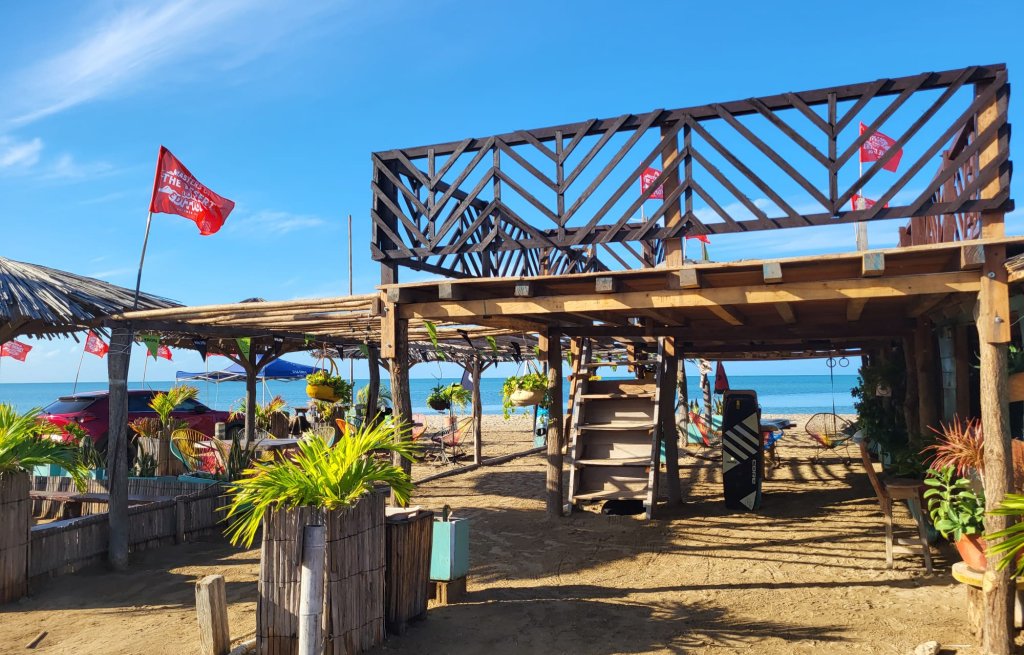
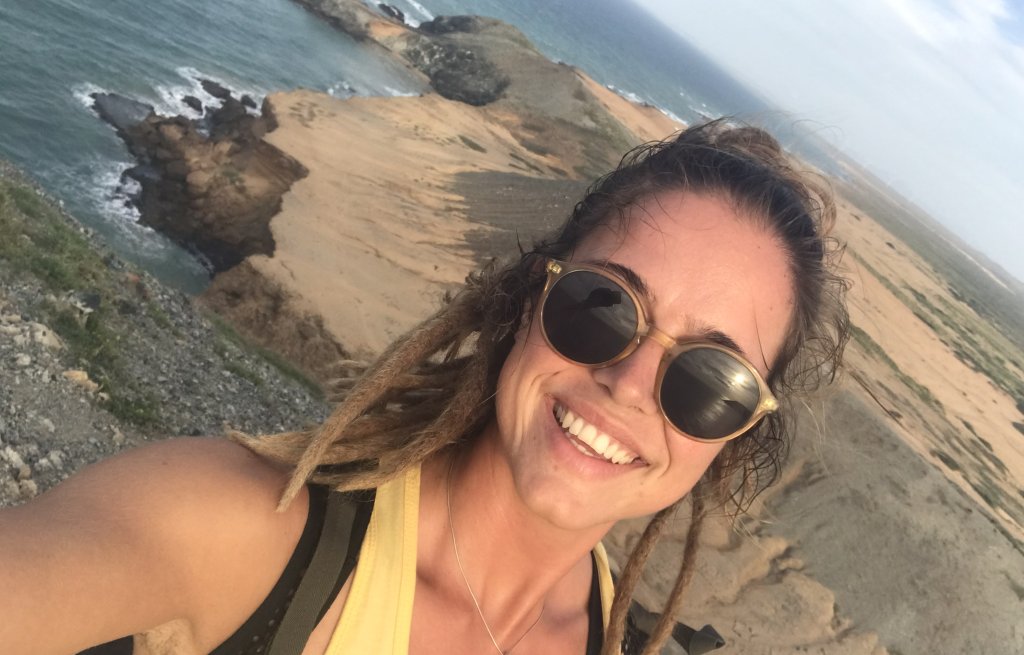
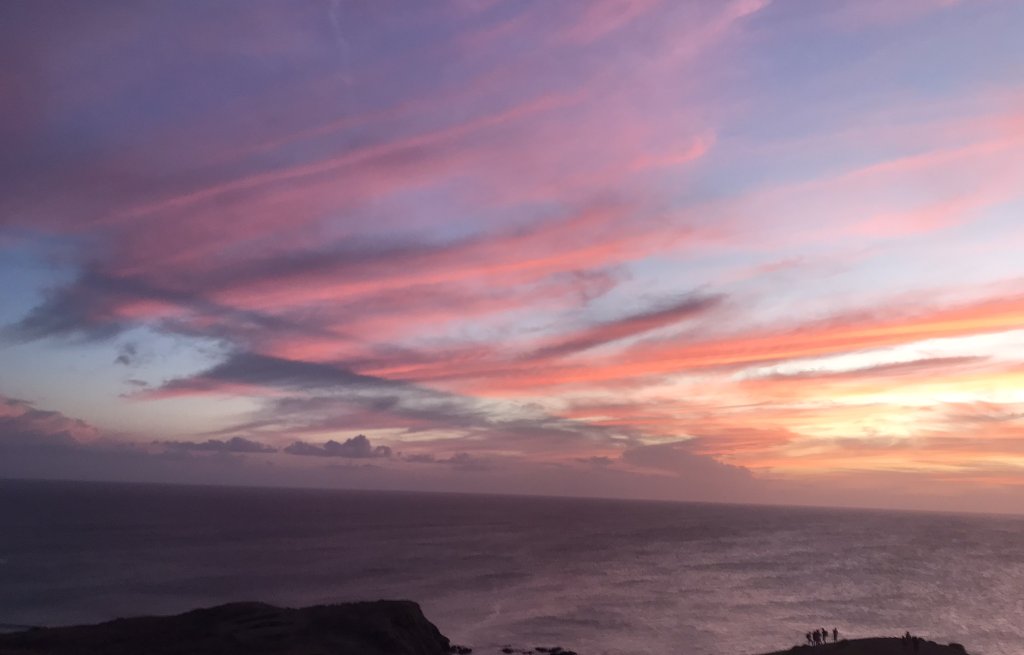
Just before Punta de Gallinas, there are beautiful sand dunes. We don't miss out on the fun and give sandboarding a go 😉 The local boys look sceptical as Thierry stands on his board at the top of the hill. But the fall that everyone (except me, of course) was expecting didn't materialise. They all look stupid 😂 I only dare to try the slightly less steep part of the dune, but I also shine by not falling over 🤩 What fun! At sunset, we are standing at the northernmost point of South America. What a cool feeling!
The night of horror

That night we sleep in Chinchorros. We hang out about 100 metres from the cliff, together with our two tour guides and a few other dudes. An abandoned sailing boat is anchored in the bay below, which was found crewless in the Atlantic a few years ago and towed here. "Tonight we'll probably be haunted by the cursed crew," we joke, but we'll soon regret it 😵
So we're hanging out in our chinchorros, I'm already half asleep. Suddenly a howl breaks through the night, my hand snaps out of my hammock and searches for Thierry's arm. What the hell was that? A thousand thoughts run through my head: Are there wolves here? Or coyotes? Are some guerrilla followers coming to rob us? We listen. Something is running around! My hand is petrified, clutching Thierry's arm. "We should go and see, then we'll know what's going on," Thierry whispers to me. But neither of us has the courage to get up. We're scared shitless, my body is really shaking and I bury myself as deep as I can in my chinchorro😅 Suddenly the wind picks up and the chinchorros blow around our ears. I don't know how long we hung there, but it could have been an hour. Eventually we manage to calm down and fall asleep again. I'm not ashamed to say I believe in ghosts. And something or someone visited us that night. How weird was that 😂 A night to remeber...
On the way back, we treat ourselves to another night in a kite house, Thierry goes on a kite trip and I sit on the terrace and work. We take the bus for the 3-hour journey home, but, contrary to expectations, it's not a shabby, smelly bus but a modern, large, air-conditioned coach. What luxury! At some point the bus slows down, the door opens and a man jumps up. He is carrying a large pot from which he is selling roast meat. Just meat, with a napkin, no bread, no nothing 😂 Bought it, ate it and thought it was delicious! And we find the whole thing wonderfully funny anyway!

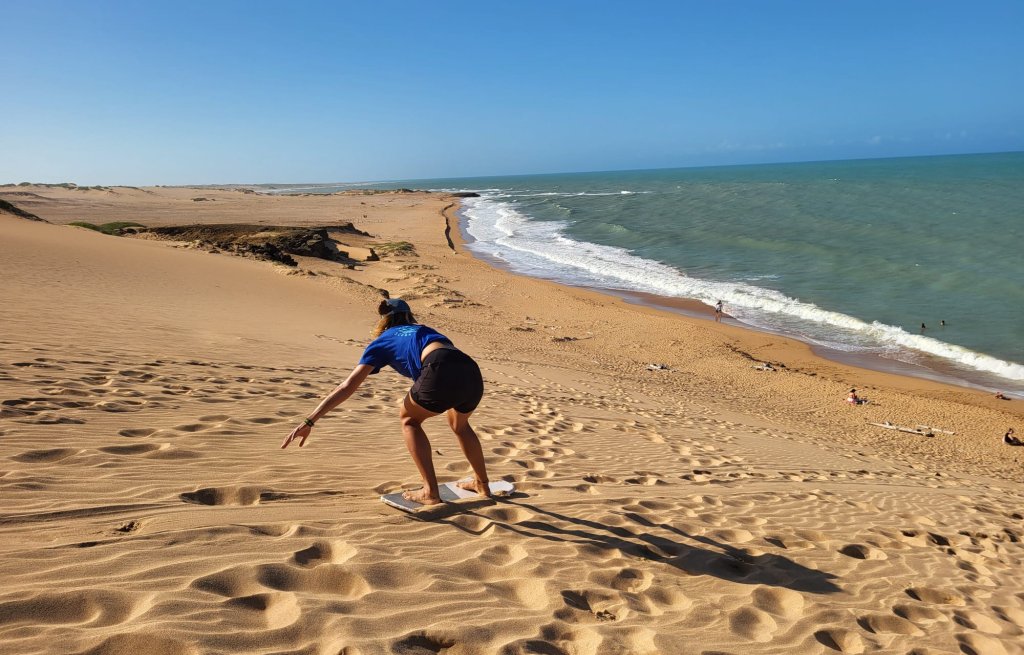
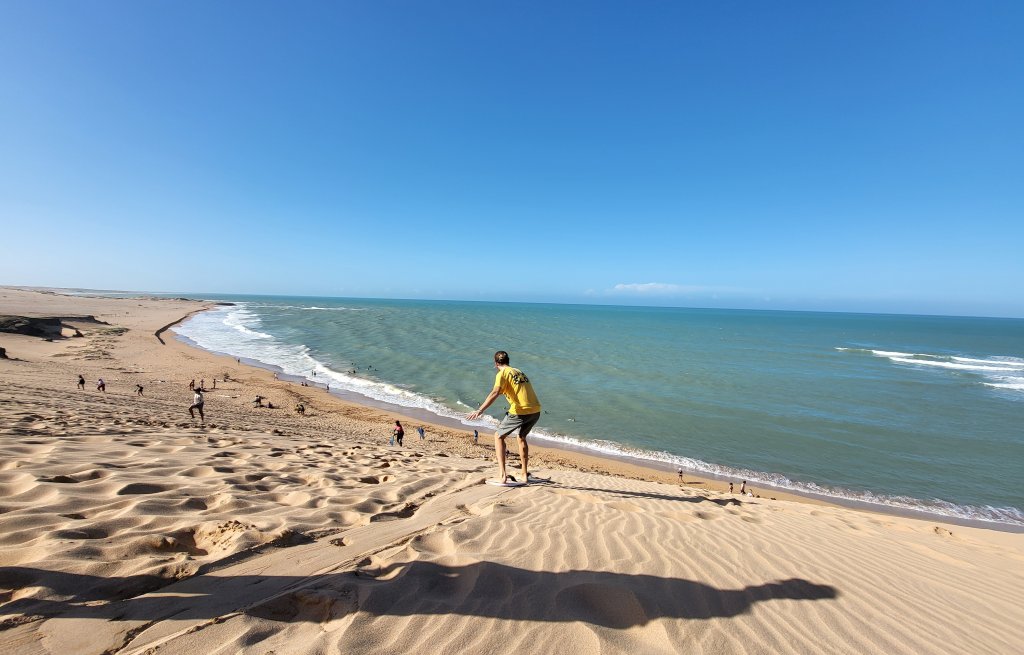
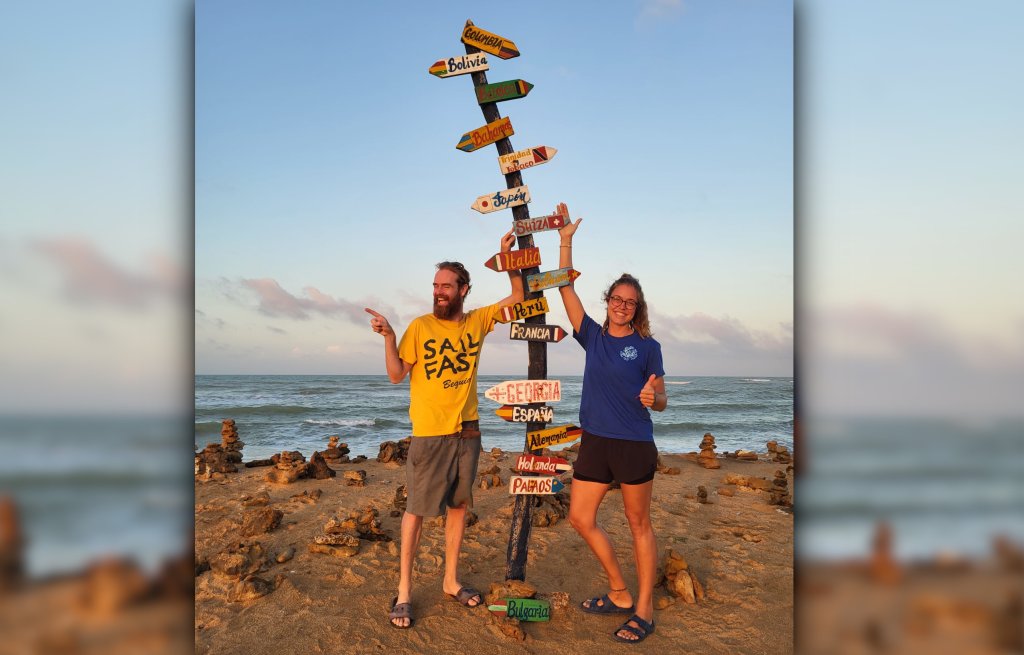
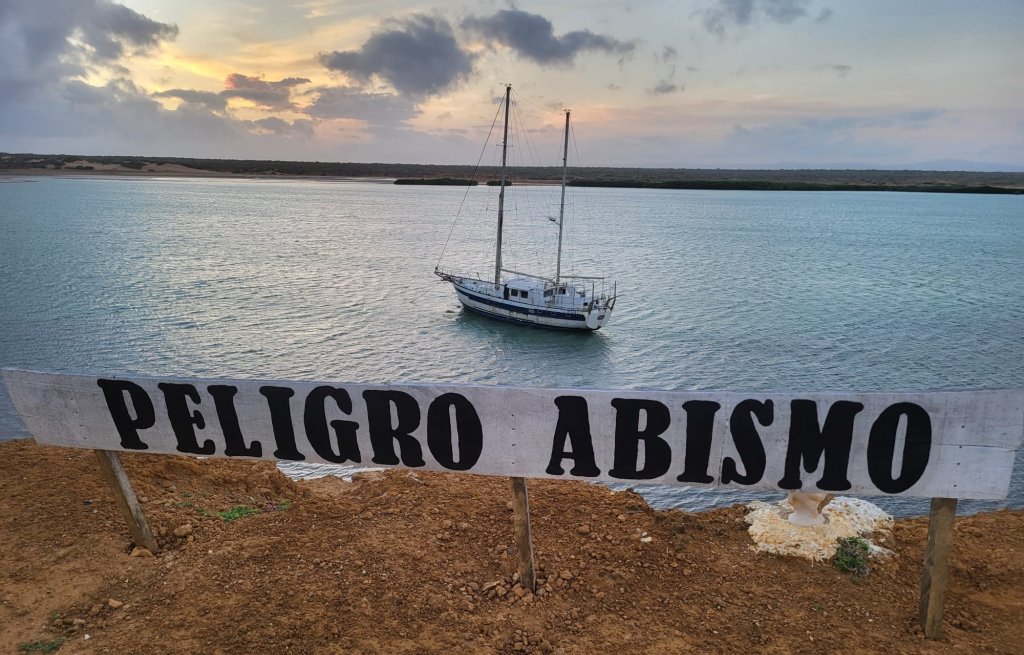

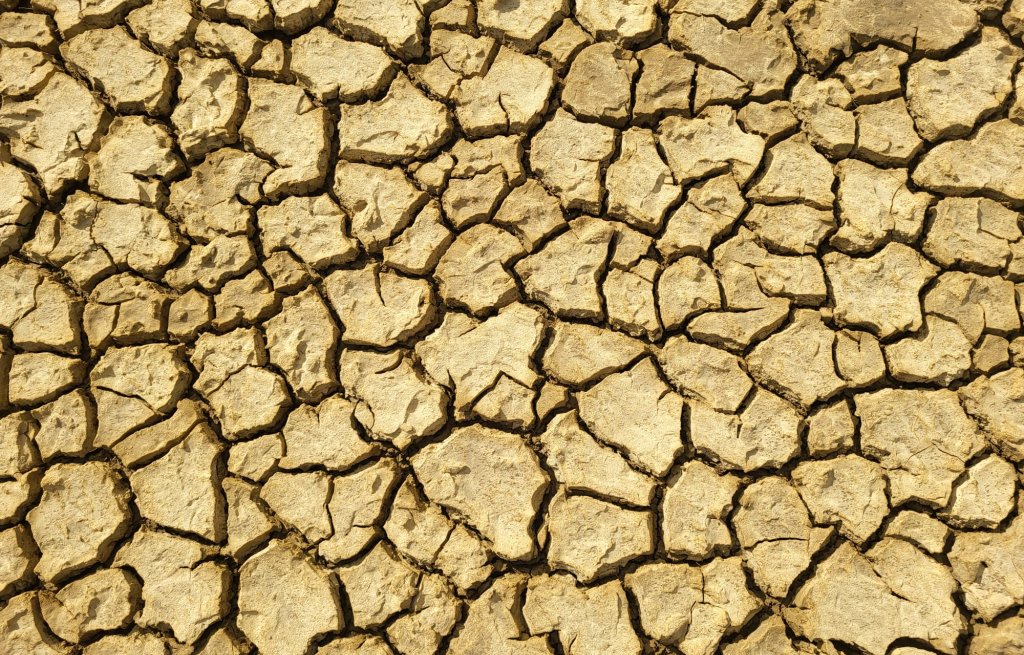
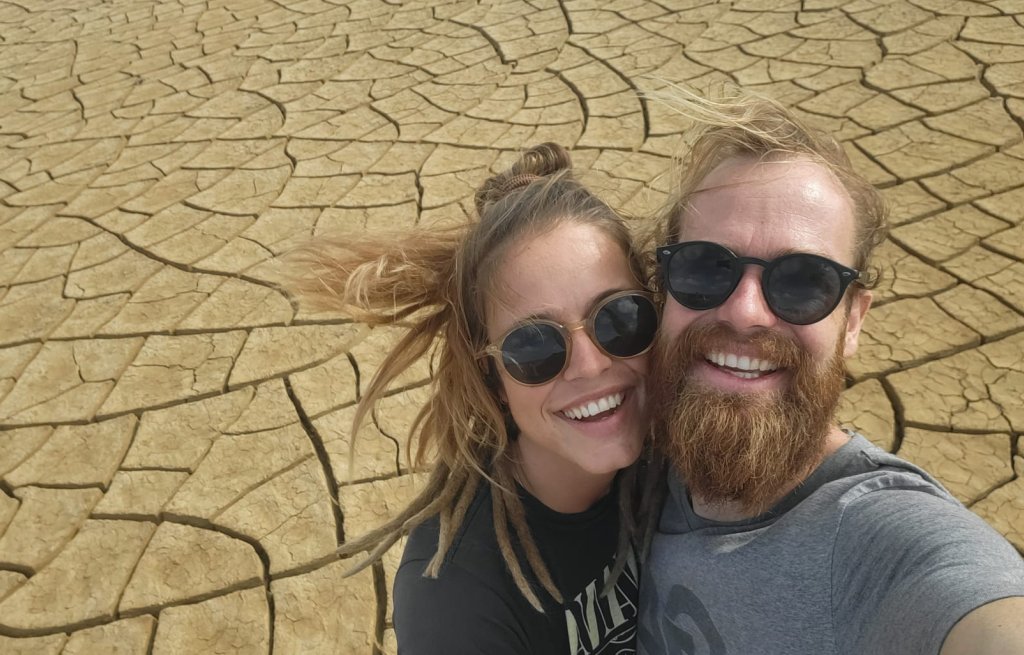
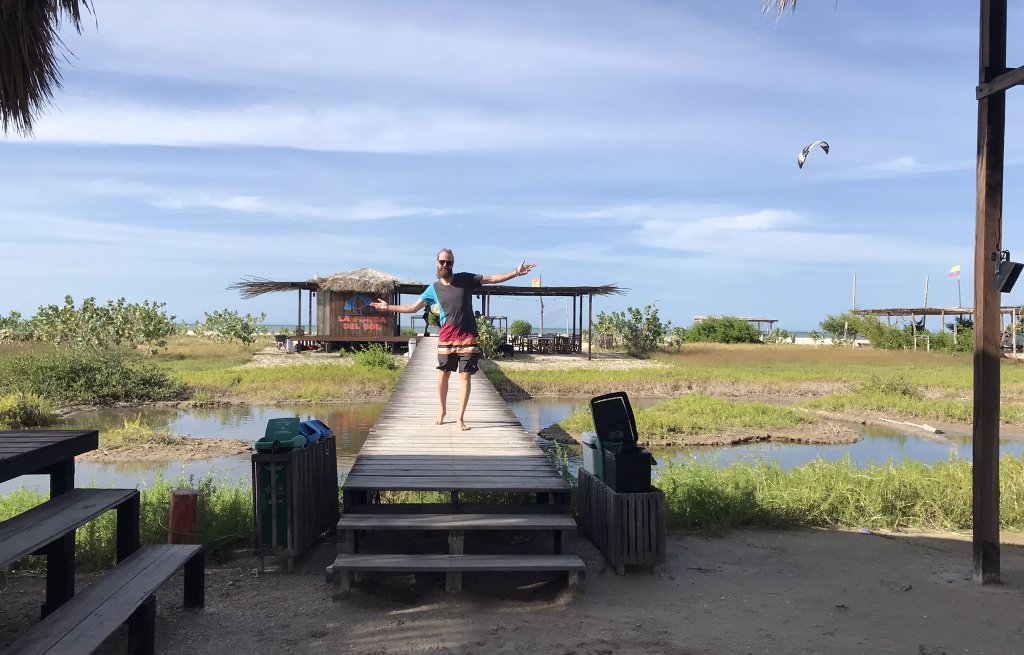
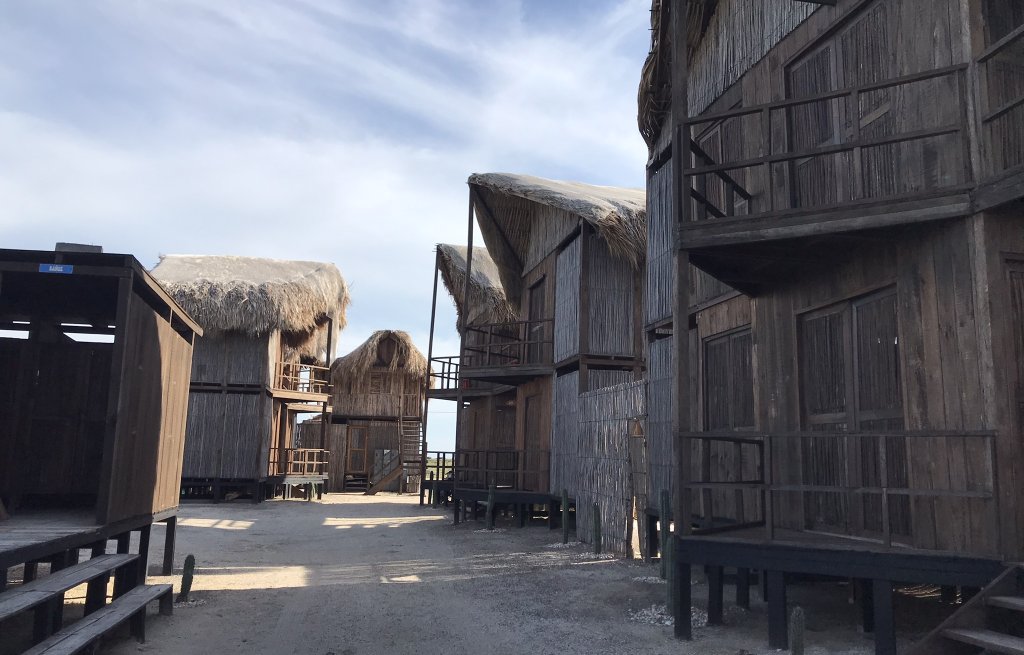
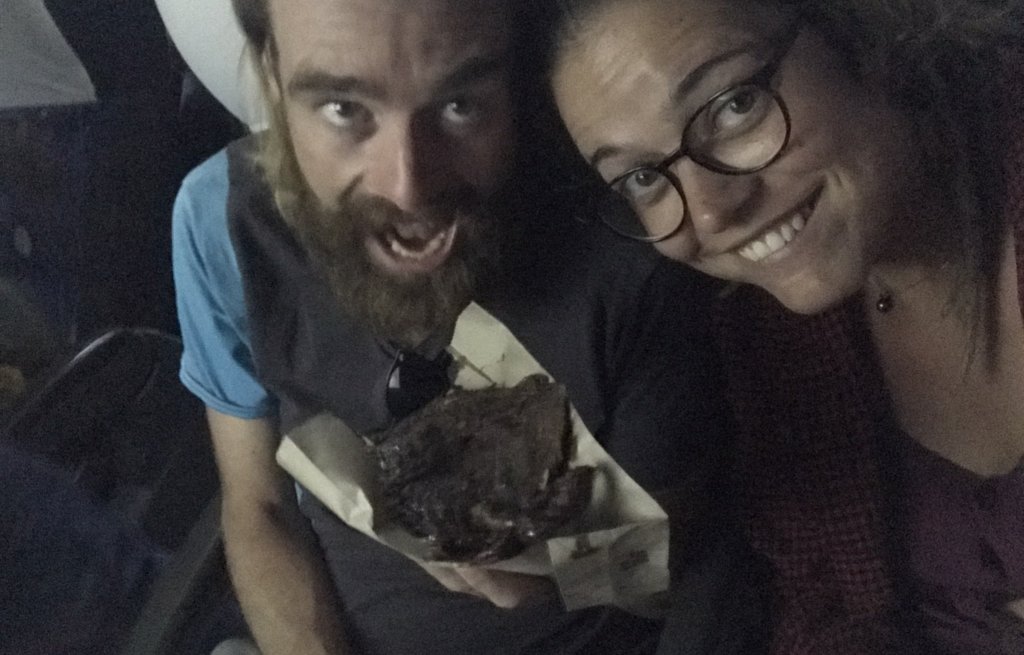
Three and a half wonderful weeks in Colombia are coming to an end. We were incredibly impressed by this country, and we only scratched the surface! We would love to return here next time, but not necessarily by sailing boat.
Now the perfect weather window opens up to tackle our last leg on the Atlantic. We calculate three days for the crossing to San Blas, Panama. As you can see, the Pacific is getting closer. Next May, we want to cross the Pacific. We're going to give our souls a good rest before we start preparing for the long journey.
What we learn in two months of living in indigenous territory, what legends are attributed to the Boquete rainforest and how we get a tsunami warning just before nightfall?
You'll soon find out...